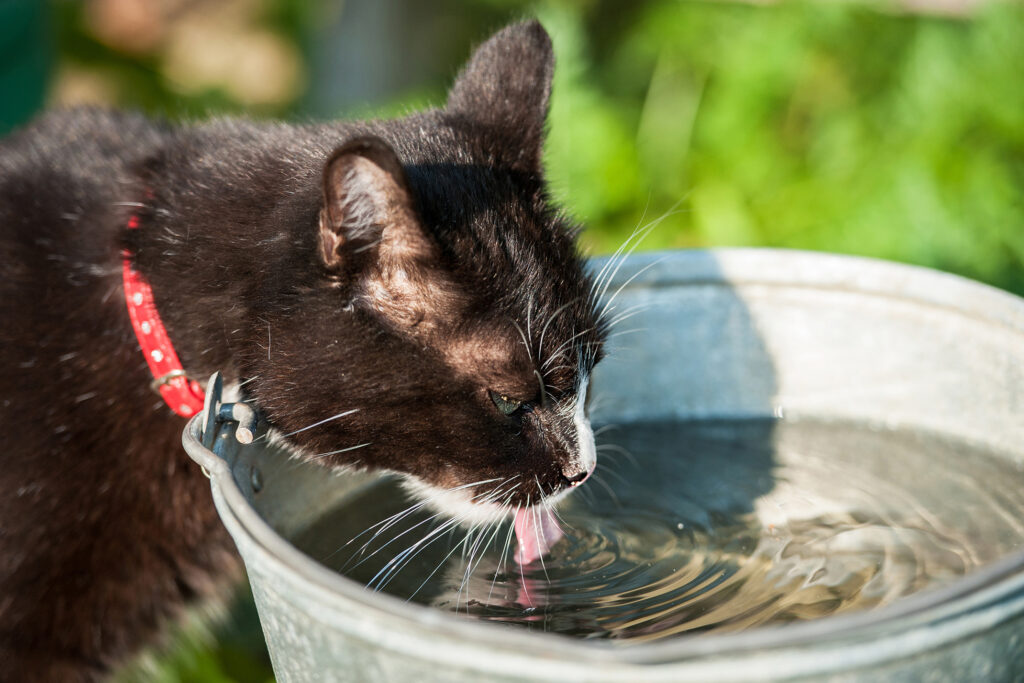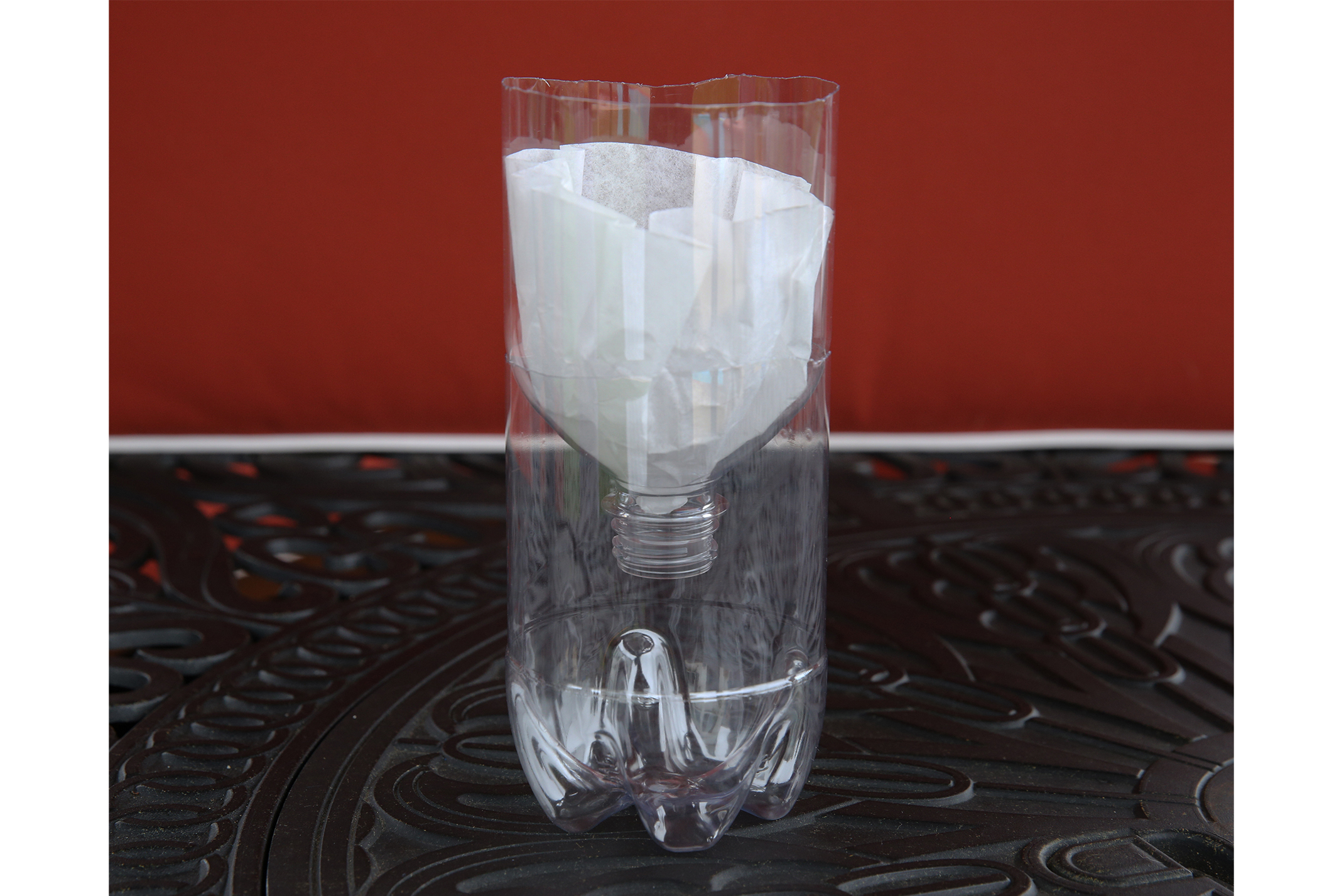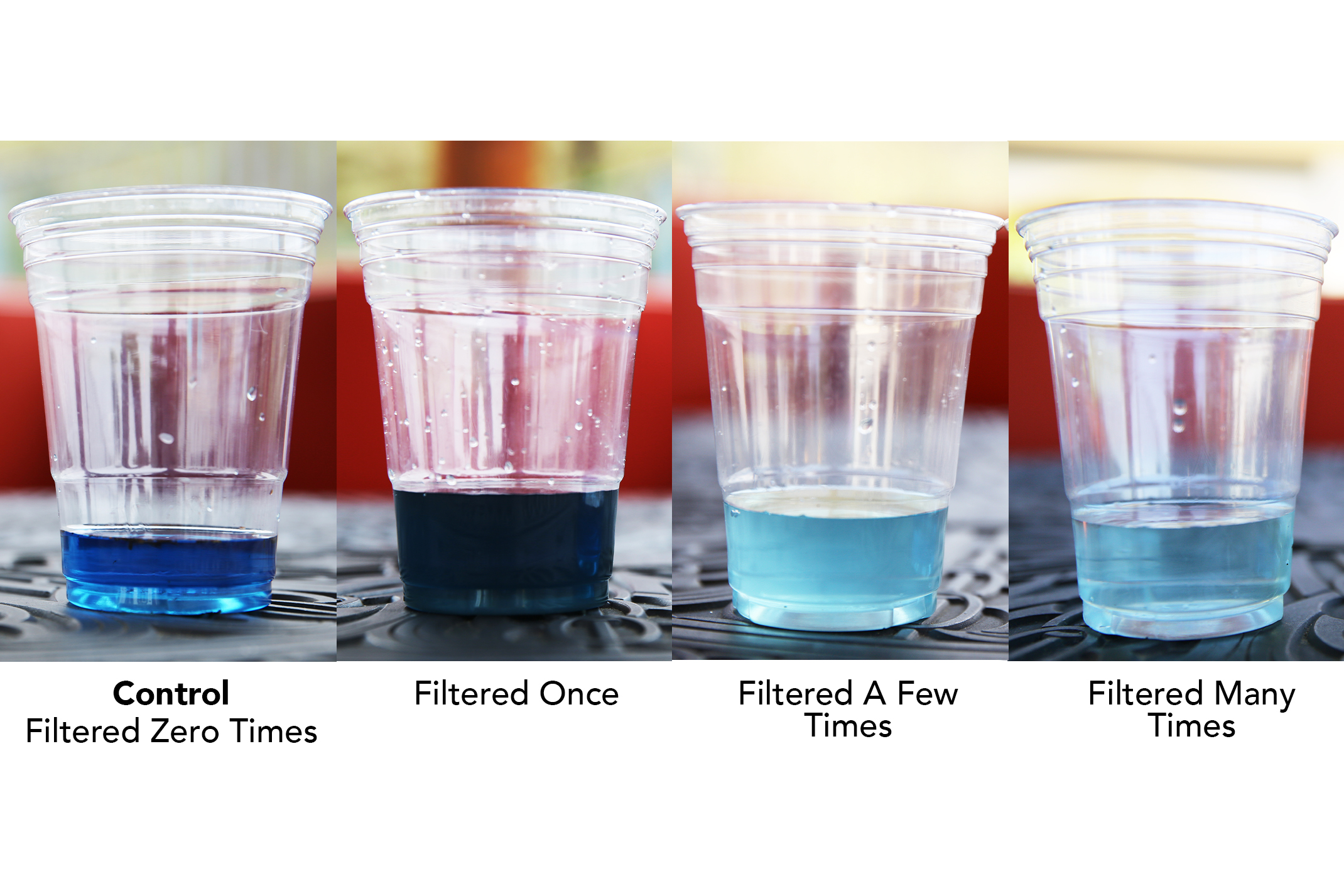In order to clean dirty water in this experiment, you first need to create your own “contaminated water”. Fill one of your cups about half-way with tap water. Then mix in a little “contaminate” of your choice: you can use soil (or dirt), a colored powder drink mix, 1-2 drops of food coloring, or a splash of any water-based colored liquid found in your kitchen (such as soy sauce or red wine vinegar). To see how well you can remove large contaminates from your water, you can also mix in a few small materials, such as beads or rice. Set aside your contaminated water for now; you’ll use it again after you make your water filter.
 Tips & Tricks:
Tips & Tricks:





